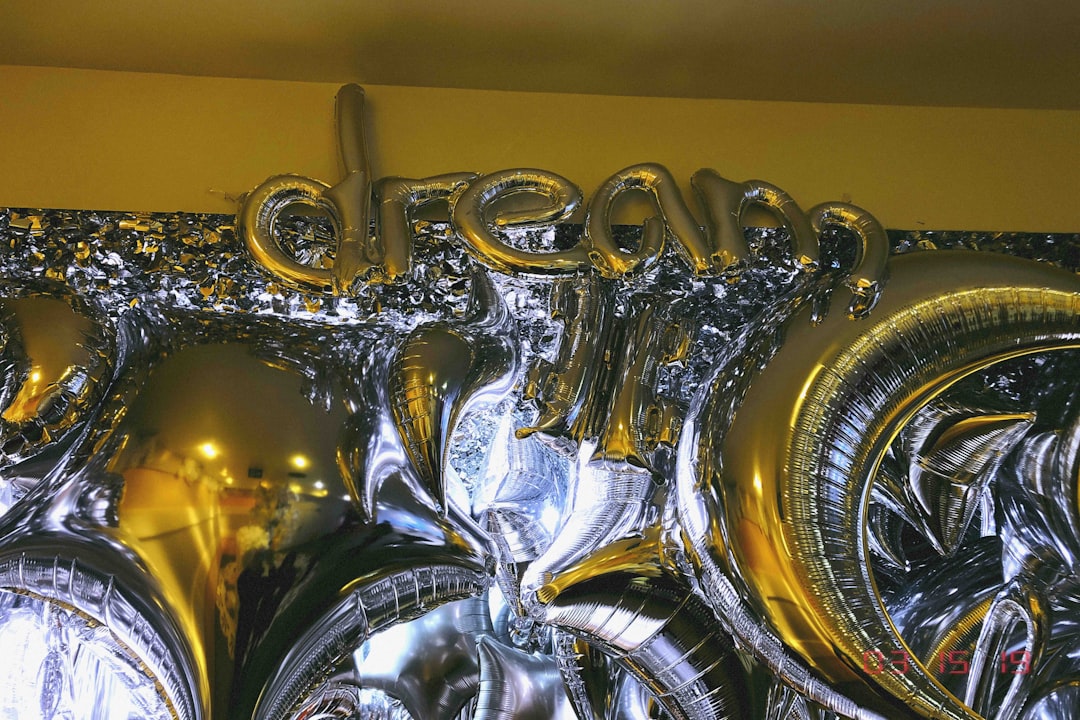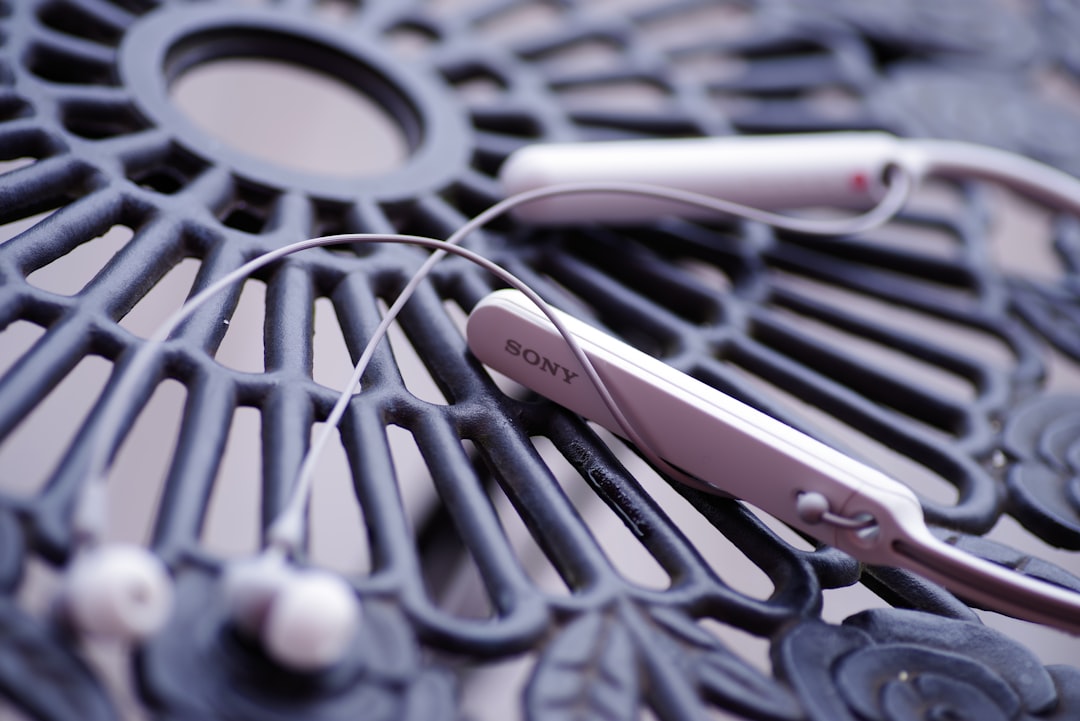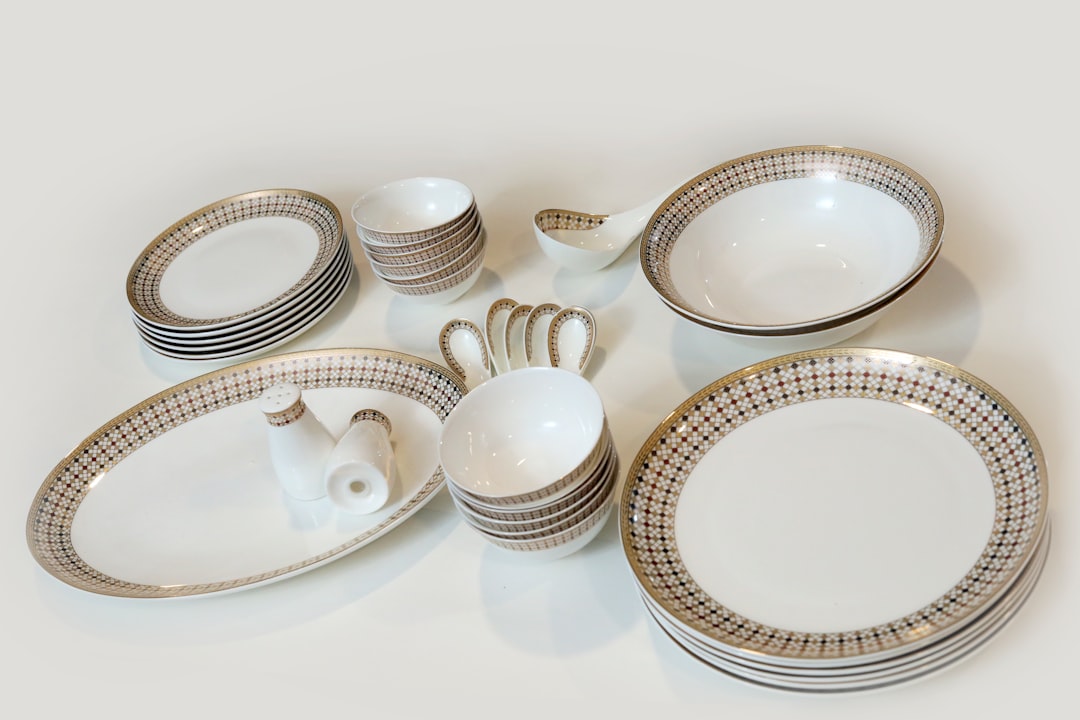

Engage prospects with a scan and streamline customer engagement with FREE QR code marketing tools by Sona – no strings attached!
Create a Free QR CodeFree consultation

No commitment

Engage prospects with a scan and streamline customer engagement with FREE QR code marketing tools by Sona – no strings attached!
Create a Free QR CodeFree consultation

No commitment
Silverware cleaning services are navigating a rapidly changing landscape where expectations for speed, transparency, and premium care continue to rise. Traditional approaches such as printed brochures, paper intake forms, and manual appointment scheduling struggle to deliver the convenience today’s clients expect. Whether a homeowner searches for silverware cleaning near me or a hospitality team seeks ongoing maintenance, people want instant access to clear service options, prices, expert guidance, and seamless booking.
QR codes give silverware cleaning providers a practical way to meet that demand. By placing scannable codes on packaging, delivery bags, receipts, appointment cards, and service reports, businesses can connect physical interactions to digital actions: booking a pickup, requesting a quote, watching aftercare videos, leaving a review, or joining a loyalty program. The result is a smoother customer experience backed by real-time data on what works, who is interested, and which campaigns drive revenue. With tools like Sona QR, you can turn each scan into a measurable insight, update destinations without reprinting, and sync activity to your CRM for smarter follow-up.

Silverware cleaning teams often rely on analog workflows that create friction for customers and staff. Paper appointment slips get lost, care instructions go unread, and phone-based scheduling eats into productive time. QR codes replace those gaps with mobile-friendly journeys that match how people prefer to engage: quick scans, immediate answers, and easy next steps.
Start by mapping where analog friction exists and where a scan could unlock a better outcome. Then design a simple, predictable experience that moves customers from offline touchpoints to helpful, branded digital destinations. Connecting these scans to your CRM or analytics platform allows you to benchmark outcomes like appointment conversion, review volume, and repeat purchase rates.

Silverware cleaning providers often face an attribution gap between physical interactions and digital engagement. A client may pick up a brochure or see an in-store sign, then forget to call, or they may browse your website but never convert. Without a direct bridge to action, you lose visibility and miss opportunities to book, upsell, or collect feedback that strengthens retention.
QR codes turn every surface into a gateway to action. Clients can reschedule with one scan on an appointment card, view storage tips from a packaging insert, or leave a review from a receipt. For your team, each scan is a measurable signal tied to a channel, location, and intent. That combination creates a repeatable system for acquiring clients, delighting them, and proving ROI.
Appointment cards can include a Scan to reschedule link. Delivery bags can link to aftercare videos. Display cases can feature a Scan to get a quote code for on-the-spot inquiries. In each example, QR codes enable the next step, capture the signal, and keep the relationship moving forward.

Different moments call for different QR formats. A homeowner seeking a quick quote needs a form that allows photo uploads. A restaurant manager wanting routine maintenance needs a direct scheduling link. By choosing the right format, you create a pathway that matches the customer’s intent and makes it easy to convert.
Dynamic codes are ideal for most campaigns because they support analytics, retargeting, and destination updates. Static codes can be useful for simple, unchanging resources, such as a PDF of your company’s heritage story or a timeless care checklist.
Dynamic QR codes are especially valuable when printed on assets with a long shelf life, such as branded care guides, reusable delivery bags, or showroom signage. You can refresh destinations for seasonal promotions or new services without reprinting.

Growth often stalls when intent is not captured in the moment. Walk-ins browse without converting, postal mail gets tossed without response, and invoices do not prompt future bookings. A QR strategy changes that by turning every surface into a measurable conversion point.
Start by mapping every place your audience interacts physically. Then assign a specific action to each placement so you can compare performance, learn quickly, and refocus your budget on what drives revenue. QR codes make these touchpoints useful for both clients and your team.
As you learn which placements generate the most scans and conversions, double down on those formats, test improved CTAs, and consider adding incentives such as limited-time discounts or priority scheduling.

Personalization is difficult when journeys are fragmented. Clients call once, pick up an estimate, or skim a brochure, then disappear. QR codes help reassemble that journey by aligning targeted actions with the decisions customers are making at each step.
Focus on use cases that meet customers exactly where they are: learning, comparing, purchasing, or returning for service. Tie each code to a specific destination that captures intent and moves the conversation forward.
Each of these use cases can be supported with dynamic QR codes so you can refresh offers based on seasonality, inventory, or demand, while preserving the performance history of each placement.
Not all scans are equal. Some indicate casual interest in general care tips, others show strong intent to book a restoration. Segmenting scans by journey stage, location, and action lets you retarget with precision and reduce irrelevant messaging that turns customers off.
QR data is especially powerful for silverware cleaning because the context is so specific. A scan from a wedding expo likely signals a need for heirloom restoration or bridal registry care packages. A scan from a restaurant account binder likely indicates scheduled maintenance for commercial flatware. Treat these signals differently in your messaging and offers.
With Sona QR, you can pipe segmented audiences to HubSpot, Salesforce, or ad platforms, turning scan data into ready-to-use remarketing lists. That conversion layer ensures you respond to actual behavior, not guesswork.
Marketing in silverware cleaning often spans many channels: showroom displays, community events, referral programs, direct mail, and social posts. Without a unifying mechanism, the data stays fragmented and performance is hard to compare. QR codes link all these efforts to a shared analytics layer, providing both immediacy for customers and clarity for your team.
By weaving QR codes across channels, you create a consistent onramp to your digital content and services. Each scan delivers insight into which messages resonate and which placements convert, so you can optimize budget and creative with confidence.
With a centralized platform like Sona QR, you can manage all codes, monitor performance by channel, and sync scan data with your CRM and ad platforms. The result is a truly connected, multichannel engine that consistently turns curiosity into action.
Even well-planned QR campaigns underperform if the goals are vague, the design is unclear, or tracking is inconsistent. A simple, repeatable process will help your team ship quickly, learn fast, and scale what works.
Use the following steps to guide your planning and execution. Each step includes practical examples for silverware cleaning providers serving homeowners, collectors, hospitality businesses, and event clients.
Start by naming the single most important outcome and the audience you want to reach. Be specific about the action you want the scanner to take and how you will measure success. For instance, drive 100 appointments for the spring polish promotion, or collect 50 qualified restoration leads from wedding expo attendees.
Think in terms of both conversion and learning. Even if your primary outcome is bookings, secondary goals like review volume or aftercare engagement can reveal new opportunities for retention and upsell.
Select dynamic QR codes for most campaigns. They allow you to collect analytics, change destinations without reprinting, and enable retargeting. Static codes are best for fixed destinations that will not change, such as a timeless care PDF or a heritage story page.
For silverware cleaning, dynamic codes pay off because service menus, promotions, and appointment availability often shift seasonally. You can keep printed materials in circulation while updating the digital experience whenever needed.
Design your codes to be instantly recognizable and inviting. Add a short, benefit-driven headline, use ample contrast between code and background, and include a branded frame or icon that signals the value of scanning. Place the CTA next to the code, not above or below where it can be missed.
Test scannability from typical distances and angles. A code on a storefront window should be larger than one on a card inside a delivery bag. Ensure the destination page is mobile-friendly, loads quickly, and repeats the core CTA to reduce friction.
Roll out your QR codes where your audience already is. Prioritize high-traffic and high-intent surfaces, then expand to more experimental placements once you have early results. Keep a deployment log so you know exactly which code is on which asset, and retire underperforming placements or iterate on the CTA.
Align the destination with the context. A code on an invoice should not lead to a generic homepage. It should invite a next step such as leaving a review or scheduling the next visit.
Tracking turns scans into strategy. Use dashboards to monitor scan counts, locations, device types, and conversion events such as form fills, bookings, and reviews. Compare performance across channels and adjust content or placement accordingly.
Adopt a test-and-learn mindset. Experiment with different CTAs, incentives, landing pages, and creative. Use statistically valid time windows and sample sizes where possible, and document what you learn so the team can scale best practices.
Knowing that a code was scanned is helpful, but the real value comes from connecting the scan to downstream outcomes like quote requests, booked appointments, purchases, and reviews. Without that end-to-end visibility, you are left guessing about ROI and may overspend on channels that look busy but do not convert.
A strong analytics setup closes the loop from scan to sale. It attributes revenue to the campaigns and placements that influenced each customer decision, reveals which offers earn the best response, and highlights where to focus your budget. This discipline also helps you spot churn risks and trigger timely interventions before a client lapses.
When you treat QR codes as performance media instead of novelty links, you can prove impact, refine strategy, and align your team around the plays that create revenue.
Scaling results comes down to disciplined execution and thoughtful creativity. You will win when every code has a clear job, every landing page is designed for conversion, and every scan feeds data into the same system.
Focus on the placements and flows that mirror your buyers’ real-world behavior. A homeowner might scan from a fridge magnet or invoice. A restaurant manager might scan from a service binder or delivery bag. Tailor your QR journeys to those moments, and use automation to keep the conversation moving.
With Sona QR, you can generate your first codes in minutes, centralize analytics, and sync scan activity with the tools you already use, which helps you scale what works without adding complexity.
Every silverware cleaning provider has unique strengths. QR codes help bring those strengths to life in ways that are easy for customers to discover and act on. The best campaigns blend utility with a touch of delight, inviting clients into a service experience that feels premium, modern, and trustworthy.
Use the examples below as inspiration. Adapt the concepts to your brand voice, service tiers, and customer segments. Test multiple versions and measure what resonates so you can invest where impact is proven.
These ideas demonstrate how QR codes connect curiosity to action while building a reliable data trail that supports smarter marketing and operations.
QR campaigns succeed when they respect context, design for ease, and measure rigorously. Small details, like placing a code at eye level or repeating the CTA on the landing page, often separate average results from stellar ones.
Avoid the most common mistakes: using generic codes that all point to a homepage, burying QR codes in cluttered layouts, and skipping analytics. Instead, create specific journeys for each placement and track every step toward revenue.
With these practices in place, you can launch with confidence, avoid wasted effort, and keep improving based on real-world feedback.
QR codes give silverware cleaning services a practical way to turn every physical moment into a digital opportunity. By placing scannable pathways on packaging, receipts, signage, and mailers, you create instant access to booking, education, and feedback while capturing data that sharpens your strategy. This is not just about novelty. It is about building a scalable, measurable system for winning and keeping customers.
When connected to analytics and CRM tools, QR activity becomes a reliable signal that informs your messaging, timing, and offers. You will know which channels deserve more investment, which placements move the needle, and where to refine the experience. With Sona QR and Sona, you can generate codes, manage destinations, track scans, attribute revenue, and sync everything to your marketing stack.
Silverware cleaning providers that embrace QR codes will showcase expertise, streamline access, and prove impact. Start by generating your first dynamic QR codes—Start creating QR codes for free—add them to your highest-traffic touchpoints, and connect the data to your CRM. Then iterate with a test-and-learn rhythm until your best plays are clear. With the right foundation, every scan can become a step toward loyalty and growth.
QR codes have revolutionized silverware cleaning services by transforming routine maintenance into streamlined, customer-centric experiences. Whether it’s simplifying service scheduling, providing instant access to cleaning instructions, or tracking service history, QR codes eliminate friction and deliver measurable efficiency gains. Imagine clients effortlessly scanning a code to schedule pickups, verify cleaning status, or access care tips—all while you capture real-time data to optimize operations and boost satisfaction.
With Sona QR, you can create dynamic, trackable QR codes in seconds that update instantly without reprinting, ensuring your campaigns stay fresh and responsive. Connect every scan directly to customer engagement and revenue, enabling smarter resource allocation and stronger client relationships. Start for free with Sona QR today and turn every scan into a seamless service moment and a growth opportunity for your silverware cleaning business.
Use QR-linked care guides and videos that provide instructions on proper storage, polishing, and tarnish removal for effective silverware cleaning at home.
Search online using terms like silverware cleaning near me and look for providers that offer instant access to service options, pricing, expert guidance, and seamless booking via QR codes or digital platforms.
Professional cleaning frequency depends on usage, but many services offer maintenance reminders and seasonal promotions to help clients schedule regular cleanings tailored to their needs.
Silverware cleaning services provide expert care, convenience through digital booking and aftercare resources, and reliable maintenance that helps preserve silverware quality and value.
DIY methods include following care guides and tutorials accessible through QR codes that demonstrate polishing techniques and proper storage to prevent tarnish between professional cleanings.
QR codes provide instant access to booking, quotes, care instructions, reviews, and loyalty programs, creating a seamless, mobile-friendly customer journey and enabling businesses to track engagement and optimize services.
Dynamic QR codes are preferred because they allow updating destinations without reprinting, support analytics, retargeting, and track customer interactions across campaigns.
Effective placements include packaging, delivery bags, appointment cards, invoices, shop signage, event booths, direct mail, and social media to capture customer intent at key touchpoints.
They can drive bookings, collect reviews, offer instant quotes, provide educational content, and enroll customers in loyalty programs while tracking and segmenting scans to tailor follow-up communications.
Track scan counts, locations, device types, conversion events like bookings and form submissions, and connect scan data to CRM systems to attribute revenue and optimize marketing spend.
Destinations should be updated as needed to reflect current offers, service menus, seasonal promotions, or new content, leveraging dynamic QR codes to avoid reprinting physical materials.
Avoid generic codes linking to homepages, cluttered placements, lack of tracking, unclear CTAs, and failing to educate staff and customers about the value and use of QR codes.
Design codes with clear, benefit-driven calls to action, place them prominently with good contrast and size, test scanability, and provide mobile-friendly destinations that deliver immediate value.
Yes, scan data can trigger automated emails or SMS messages with care guides, reminders, or special offers based on the customer’s interaction and stage in the service journey.
Integration enables tracking customer behavior from scan to sale, segmenting audiences for targeted marketing, measuring ROI, and refining campaigns based on real-time performance data.
Use Sona QR's trackable codes to improve customer acquisition and engagement today.
Create Your FREE Trackable QR Code in SecondsJoin results-focused teams combining Sona Platform automation with advanced Google Ads strategies to scale lead generation

Connect your existing CRM

Free Account Enrichment

No setup fees
No commitment required

Free consultation

Get a custom Google Ads roadmap for your business






Launch campaigns that generate qualified leads in 30 days or less.
